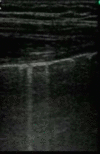Clinician performed resuscitative ultrasonography for the initial evaluation and resuscitation of trauma
- PMID: 19660123
- PMCID: PMC2734531
- DOI: 10.1186/1757-7241-17-34
Clinician performed resuscitative ultrasonography for the initial evaluation and resuscitation of trauma
Abstract
Background: Traumatic injury is a leading cause of morbidity and mortality in developed countries worldwide. Recent studies suggest that many deaths are preventable if injuries are recognized and treated in an expeditious manner - the so called 'golden hour' of trauma. Ultrasound revolutionized the care of the trauma patient with the introduction of the FAST (Focused Assessment with Sonography for Trauma) examination; a rapid assessment of the hemodynamically unstable patient to identify the presence of peritoneal and/or pericardial fluid. Since that time the use of ultrasound has expanded to include a rapid assessment of almost every facet of the trauma patient. As a result, ultrasound is not only viewed as a diagnostic test, but actually as an extension of the physical exam.
Methods: A review of the medical literature was performed and articles pertaining to ultrasound-assisted assessment of the trauma patient were obtained. The literature selected was based on the preference and clinical expertise of authors.
Discussion: In this review we explore the benefits and pitfalls of applying resuscitative ultrasound to every aspect of the initial assessment of the critically injured trauma patient.
Figures












References
-
- Research CIfH National trauma registry report: Hospital injury admissions 1998/1999. 2001.
-
- Kirkpatrick AW, Sustic A, Blaivas M. Introduction to the use of ultrasound in critical care medicine. Crit Care Med. 2007;35:S123–S307. doi: 10.1097/01.CCM.0000260622.26564.94. - DOI
Publication types
MeSH terms
LinkOut - more resources
Full Text Sources
Medical
Research Materials

